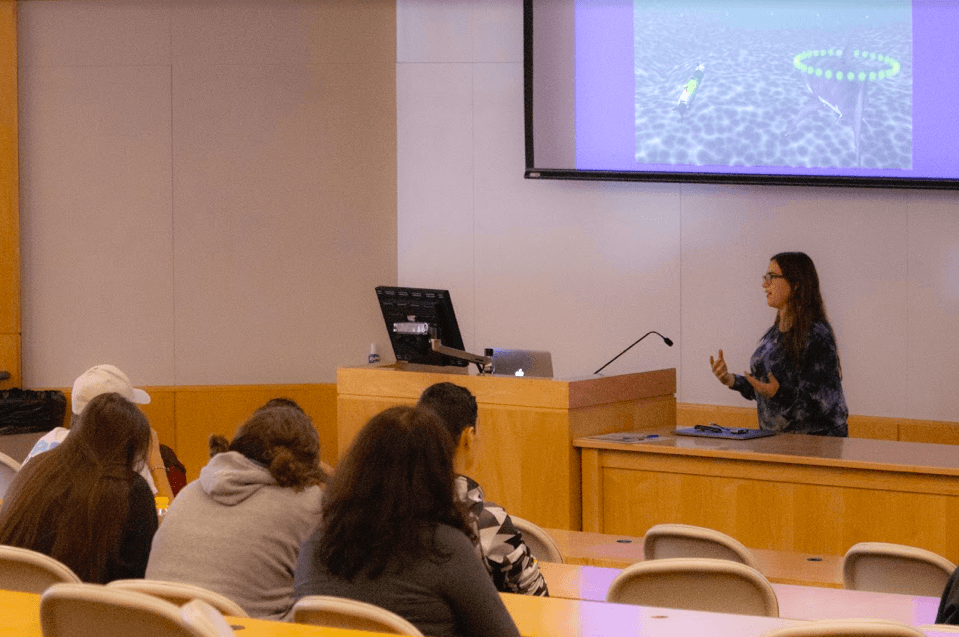Six marine biology majors presented their summer research this past Friday
Sophomore marine biology major Katrina Davis shared her experience at her summer internship working with beluga whales. Photo by James McIntosh.
The third annual “I Know What You Did Last Summer” lecture was held this past Friday afternoon, where a total of six University of Rhode Island marine biology students discussed their research-focused summer internships to their peers.
Sophomore marine biology major Katrina Davis and junior marine biology and animal science double-major Emily Fredsbo worked together within the Coastal Environmental Fellowship to identify social behaviors of aquarium beluga whales. Davis focused her research on monitoring the annual number of social interactions of a maturing male beluga whale named Juno. These were friendly interactions or courtship maneuvers.
“States are the more general behaviors of whether they are being non social or social behavior and when they exactly separated and events are the more specific behaviors as far as what they were doing while they were socializing,” said Davis.
Fredsbo focused her research on footage of Juno in order to identify specific interactions between male whales. “One thing that I was looking at more specifically was the way that the male belugas reacted to the other male belugas,” said Fredsbo.
The next presenter, continuing-education marine biology student A.J. Ferraro, spent his summer focusing on how seal and sea lion whiskers can detect submarines. Ferraro described his research as a study of biological technologies that he explored.
“How do you locate an extremely quiet submarine in a noisy environment such as the ocean using marine biology?” said Ferraro. “When you are in a body of water, fish create movement and there is a depression. Seals can sense this with their whiskers.”
Senior marine biology student Haley Kenyon worked as Coastal and Environmental Fellow under Dr. Bradley Wetherbee, where she studied the variation of life history characteristics of Sandbar sharks. Kenyon’s research partner, Keyline Moreno, studied Guam Tip sharks.
“We read all these journal articles and tried to figure out variation within the different subpopulations,” said Kenyon. “Some of the characteristics were their size at birth, size at maturity, age at maturity and range between sexes.”
Senior marine biology major Max D. Zavell worked as a National Oceanic and Atmospheric Administration (NOAA) Ernest F. Hollings Scholar to study ‘multi-climate stressor effects and Louisiana Sweet Crude Oil sheen toxicity in larval eastern oysters.’ His research included three main objectives.
“What is the effect of Louisiana Sweet Crude Oil sheen toxicity on the survival of larval oysters?” said Zavell. “How does the previous oil and UV exposure impact survivability when you are in clean sea water? And what does the subsequent salinity and temperature effect have on each shock increase previous oil toxicity?”
The final presentation came from Karla Haiat,
“The seals swim together which creates some problems with having a robot that follows the tag because the robot doesn’t have any idea of what the other things around the thing it is following is so it can definitely hit the other seal,” said Haiat. “So what I did is create a biologging tag that doesn’t necessarily need to be connected to this vehicle.”





